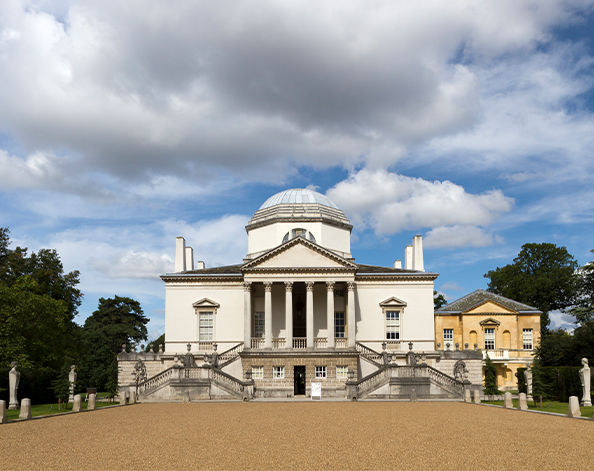Are there typical features we see in the performance of the prime market over time?
Tom: “Over the last 40 years, we’ve seen property prices in prime central London rise by 1480%*. It’s a huge number but what’s informed our forecast for 2022 is that the performance over the last five years has been relatively subdued. This has largely been due to tax changes and issues including Brexit, which have resulted in political volatility.
In the background of the pandemic, there is already a long overdue recovery taking place, which I anticipate will result in some more marked priced growth than we’ve seen in recent years.”
What qualities have come to characterise the prime London residential market?
Jeremy: “As Tom mentions, it’s difficult to say because of the amount of upheaval we’ve seen over the past five years – from stamp duty increases, to political uncertainty. This has caused the market in prime central London to be quite weak compared to historical trends, but it's generally a lot more stable than what we've seen.
There’s been a lot of talk about moving to the country, but I would argue that this hasn't been quite as significant as reported, with many people buying second homes as opposed to joining a mass exodus from London. Knight Frank’s data also indicates a surge in so-called ‘boomerang buyers’ returning to the capital, with a spike in the number of prospective buyers registering with the agency from outside London who are looking for a city flat.
We've also seen a lot of interest in larger houses with gardens, particularly in areas like Wandsworth, Fulham and Chiswick, which are outperforming previously popular areas like Mayfair and Knightsbridge.”

There’s been a lot of talk about moving to the country, but I would argue that this hasn't been quite as significant as reported.
How would you briefly sum up what we’re seeing in the Q4 prime residential market in terms of sales volumes and prices?
Tom: “Our latest figures show that average prices in prime central London increased by 1.2% in the year to October 2021. The last time annual growth exceeded this figure was in September 2015.
I think we’re still at a stage where people are trying to understand where the markets are going to land, and from next spring, we’ll begin to see more normality coming back as supply and demand re-balance.”
What types of property and areas are currently seeing the greatest demand and why?
Jeremy: “There's been a lot of focus on houses and large properties with outside space, which people are putting a premium on. For example, houses in Notting Hill with communal gardens seem to have massively outperformed the rest of the market.”
Tom: “As well as outdoor space, people are also looking at the allocated space for working from home inside a property, and a good general state of repair. At the moment, some buyers are not prepared to take on properties that require a lot of work, because of supply chain problems, and spiralling building costs.”
How has the performance of the prime property market during COVID been different to during other economic shocks?
Jeremy: “The difference between the financial situation of the pandemic and previous financial crises is that banks have been well capitalised, which has given policymakers the ability to act.
Previously, post-financial crisis there was lots of money pumped into banks, but this didn't always get into the system because they needed to use the cash to keep themselves afloat. This time, the money actually reached people where it was needed.”
Tom: “We’re not, by any means, back to where we were before and numbers haven't been anything to write home about, but our house price forecasts show us that we're still expecting a 2% growth overall for Prime Central London, by the end of the year.”
Is there a particular change or piece of data that has intrigued you most about the residential property market?
Tom: “What intrigued me the most were the transaction figures for Prime central London before and after the stamp duty holiday. We saw the patterns of transactions tended to follow the deadlines with a peak in June 2021, before the discount available was reduced from 1 July 2021. The maximum saving of £15,000 pounds was still a saving and a cheque that buyers would prefer not to write.
The lesson is to never underestimate the power of a stamp duty holiday or any other type of saving to have an impact on the prime market. For example, I’m sure many buyers will be prompted to act over the next several months because they sense interest rates will rise.”
Jeremy: “For me, it’s the amount of potential credit that's available, and the relative ease at which one can get it. For example, some buyers have been able to put down a 5% deposit, and be backed by the Government.”

According to our house price forecasts we’re looking at 7% growth in Prime Central London property prices in 2022.
Market predictions
What do you think we might be able to expect from the residential property market in 2022?
Tom: “According to our house price forecasts we’re looking at 7% growth in Prime Central London property prices in 2022. This is the strongest level of growth that we'll have seen in several years. As mentioned, this is largely based on the fact we haven’t seen much activity in recent years, we’re in an apparently stable political landscape and the interest rate environment feels largely benign with minimal increases touted.
We also expect more supply to start coming through. It's been tight in some places this year, but property is seasonal and listings tend to come in in spring – less so in central London though. I don't think this will have an effect of depressing prices however, particularly with demand remaining so strong.
“Depending on the progress of coronavirus variants such as Omicron, demand from overseas may also start to kick in, and we anticipate prime central London will rally, and outperform other markets in a way that it didn't during the pandemic. There are a lot of signs pointing towards 2022 being a good year.”
Many of our clients will be receiving bonus or dividend payments in Q1 2022. What kind of demand are you seeing from city and finance professionals?
Jeremy: “I’ve seen a very high level of interest in buying new homes from property from finance professionals. For example, private equity professionals have had a successful couple of years. Where individuals have made a lot of money, but also saved a vast amount at the same time, this has resulted in a huge amount of capital in the market.
As a result, I expect we’ll be seeing people making larger deposits when purchasing property, as well as a significant amount of demand from people working in the city.”
Does prime London property always offer a good opportunity for long term capital growth?
Tom: “If you go back 30 or 40 years, the return on prime London property has generally been positive, so it could be a good opportunity for long term capital growth. Obviously each case is unique and independent advice should be sought.”
Jeremy: “It’s important to also note that one of the reasons why people find cities like London and New York so attractive is their long history of political stability and clear rule of law. It's something that we can often take for granted, but it’s important from a property buying perspective – especially for international buyers.”
What do you think individuals looking to purchase a new home in 2022 should bear in mind? How can they navigate some of these changes?
Jeremy: “I would encourage buyers to put yourself in a position where you can move quickly when the right opportunity arises. This means speaking with your tax advisor in advance to and working with the right financial partners. These sound like basic steps, but most people don't do them, and a lot of people can miss out on the best opportunities because of delays.”
Tom: “At the moment, it feels like an opportunist’s market, and buyers should be prepared to think outside of normal buying patterns. During the last five years, most of our new buyers registered in January which is also a time when supply is typically lowest. For anyone with some flexibility around when they list, it could be good to act early, before the bulk of the frustrated sellers from 2021 re-enter the market in the spring.”
*Knight Frank Prime Central London index
To find out how we can help you buy a property, get in touch today.
Disclaimer:
This article is for general information purposes only and should not be used or relied upon as professional advice. It is advisable to contact a professional advisor if you need financial advice.

